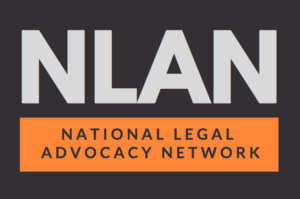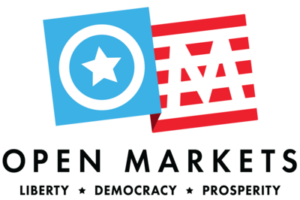Amazon’s Failures
In 2021, Jeff Bezos pledged to make Amazon the “Earth’s Best Employer.” Since then, Amazon hasn’t fixed its unsafe workplace conditions or high injury rates. Its facilities remain the most dangerous in the industry.
- 39,062 injuries in 2024
- 69% of surveyed workers in 2023 reported having taken unpaid time off in the past month due to pain or exhaustion
- 59% spike in injuries during peak periods
We Can Stop Amazon
Without pushback from the public, Amazon’s practices risk becoming the new industry standard. Workers are fighting back, unionizing and exercising their right to a safe workplace. Together we can end Amazon’s high-tech sweatshop model.
Join workers in calling on public officials to put the following measures in place:
1. End the high-tech sweatshop model
We need state and federal laws that prevent employers from forcing an unsafe pace of work through surveillance and threat of termination. States like CA, NY, MN and WA have already taken action, and members of Congress have introduced legislation, but we need more public officials to stand up to corporations like Amazon.
2. Modernize regulation and enforcement
Agencies should strengthen and enforce standards that ensure Amazon’s model does not become standard. As a start, we need standards that protect workers from an unsafe pace of work, extreme temperatures, ergonomic risks, and surveillance practices that undermine job quality.
3. Strengthen labor law
The power imbalance between workers and employers is degrading job quality at Amazon and beyond, and we need to remove obstacles that prevent workers from unionizing and reaching agreements with their employers.
A big reason Amazon workers are organizing around the country is to end the injury crisis at the company. So far, Amazon has failed to listen to them, and has refused to negotiate a contract with unionized workers. If this wasn’t bad enough, Amazon, SpaceX and Trader Joe’s are working to dismantle the power of the National Labor Relations Board itself.
Resources for Workers
To make Amazon safer, you can exercise the rights you already have. Here are some fact sheets to make that easier.
- Learn more about workers’ right to organize via the National Labor Relations Act, and how to report safety issues to OSHA.
- Here are highlights from a recent Senate committee investigation into Amazon’s injury crisis.
- For workers in New York, here’s a summary of the Warehouse Worker Protection Act (WWPA) and the Warehouse Worker Injury Reduction Act (WWIRA).
- If you’re an Amazon worker interested in more safety resources, get in touch with us using this form.
Supporters
References
The Public Health Crisis Hidden in Amazon Warehouses, Research Brief & Fact Sheets from Human Impact Partners, January 2021
Primed for Pain: Amazon’s Epidemic of Workplace Injuries, Strategic Organizing Center, May 2021
Injuries, Dead-End Jobs, and Racial Inequity in Amazon’s Minnesota Operations, National Employment Law Project, December 2021
Amazon’s Policing Power: A Snapshot from Bessemer, Rutgers University, Michigan State University, and The Roosevelt Institute, February 2022
The Injury Machine: How Amazon’s Production System Hurts Workers, Strategic Organizing Center, April 2022
The Worst Mile: Production Pressure and the Injury Crisis in Amazon’s Delivery System, Strategic Organizing Center, May 2022
Fact-Checking Amazon’s Bogus Workplace Health and Safety Claims, National Employment Law Project, May 2022
Monitored: How Amazon Undermines the Safety of Workers and Our Communities, Athena, May 2022
Warehousing Pain: Amazon Worker Injury Rate Skyrockets with Company’s Rapid Expansion in New York State, National Employment Law Project, May 2022
In Denial: Amazon’s Continuing Failure to Fix Its Injury Crisis, Strategic Organizing Center, April 2023
Disabling: How Amazon Fails Associates with Workplace Accommodations, United for Respect, July 2023
A Good Living: Amazon Can and Must Make a Middle-Income Livelihood Possible for the People Who Work in Its Warehouses, National Employment Law Project, September 2023
Pain Points: Data on Work Intensity, Monitoring, and Health at Amazon Warehouses, University of Illinois Chicago, October 2023
Tracked and Targeted: Navigating Worker Surveillance at Amazon, Our Data Bodies, January 2024
Same Day Injury: Amazon Fails to Deliver Safe Jobs, Strategic Organizing Center, May 2024
Handling Hardship: Data on Economic Insecurity Among Amazon Warehouse Workers, University of Illinois Chicago, May 2024
Amazon’s Outsized Role: The Injury Crisis in U.S. Warehouses and a Policy Roadmap to Protect Workers, National Employment Law Project, May 2024
Peak Seasons, Peak Injuries: Amazon Warehouses Are Especially Dangerous During Prime Day and the Holiday Season—and the Company Knows It, United States Senate Health, Education, Labor, & Pensions Committee, Amazon Investigation Interim Report, July 2024
Workplace Safety and Health: OSHA Should Take Steps to Better Identify and Address Ergonomic Hazards at Warehouses and Delivery Companies, United States Government Accountability Office, October 2024
The “Injury-Productivity Trade-off”: How Amazon’s Obsession with Speed Creates Uniquely Dangerous Warehouses, United States Senate Health, Education, Labor, & Pensions Committee, Amazon Investigation Final Report, December 2024


























